I’m not going to get very far with cataloguing wildflowers if I keep dwelling on the ones I’ve already covered, but I did say that I’d look for “thumbprints” the next time I saw lady’s thumb. And the next time was this morning, because it grows in my yard. Or does it? I looked at several dozen leaves and not a single one had the mark on it.
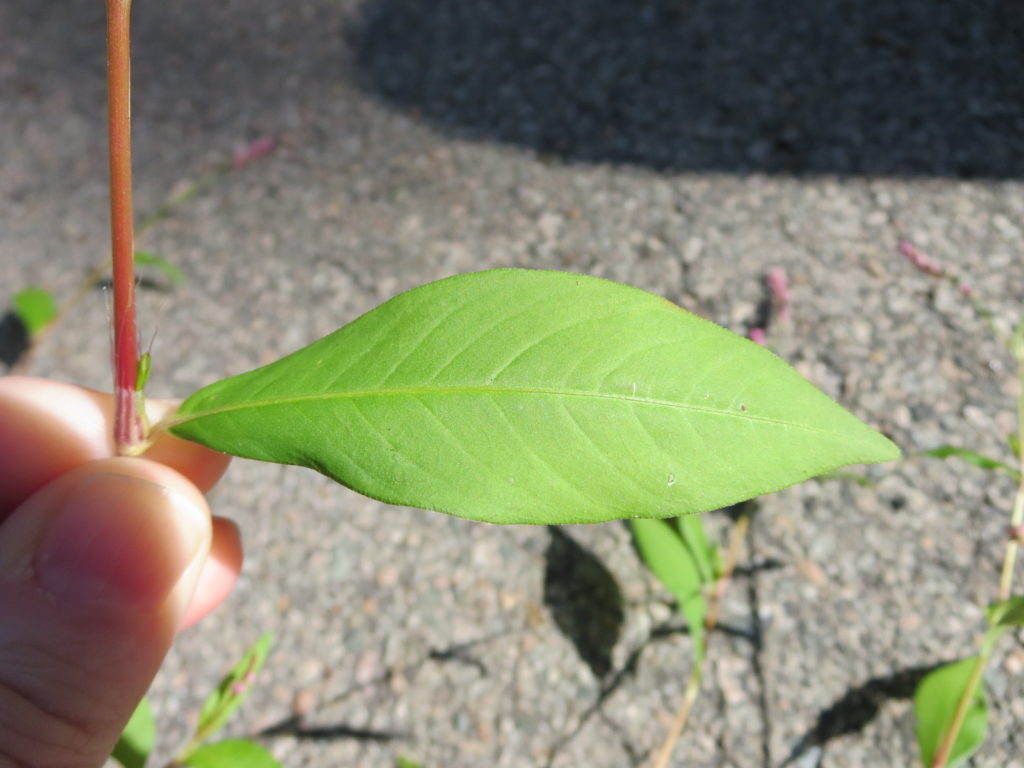
While I was researching smartweeds the other day, I believe what I read was that while some other smartweeds occasionally have the mark, the defining characteristic of lady’s thumb is that most of its leaves do have it. This plant in my yard is therefore probably not lady’s thumb.
So what is it? Perhaps the clue is to be found where the leaf meets the stem. The stem isn’t hairy or sticky (so I don’t think this is Pennsylvania smartweed, another lady’s thumb lookalike), but there are long bristles sticking out. You can see them more clearly here.
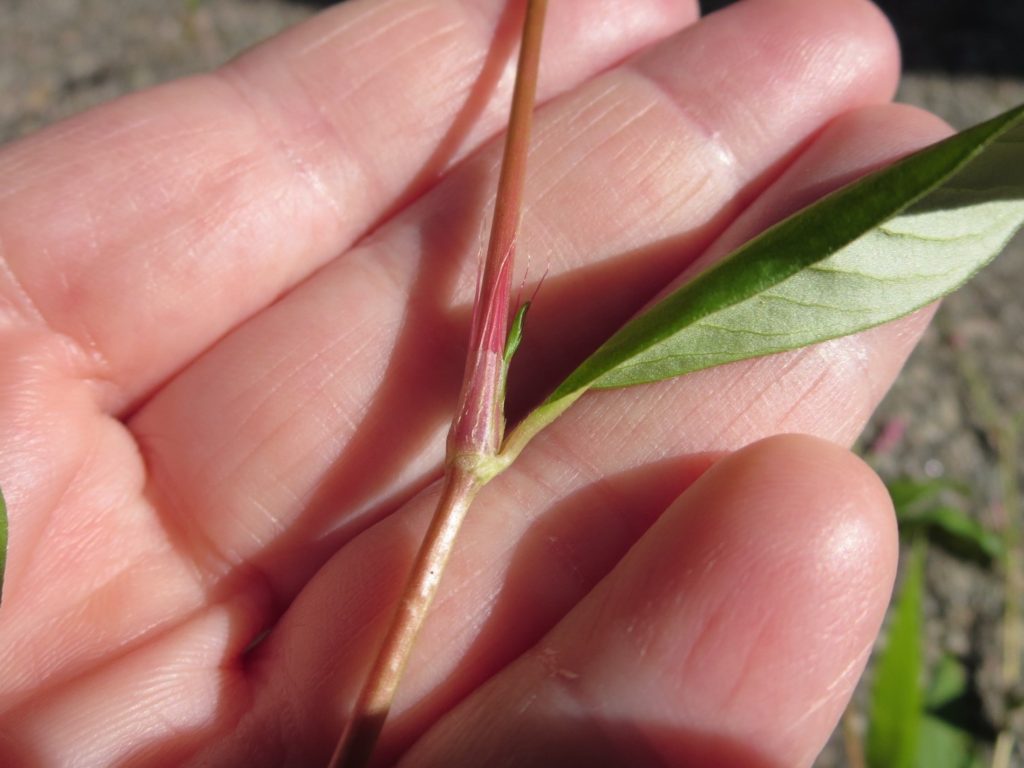

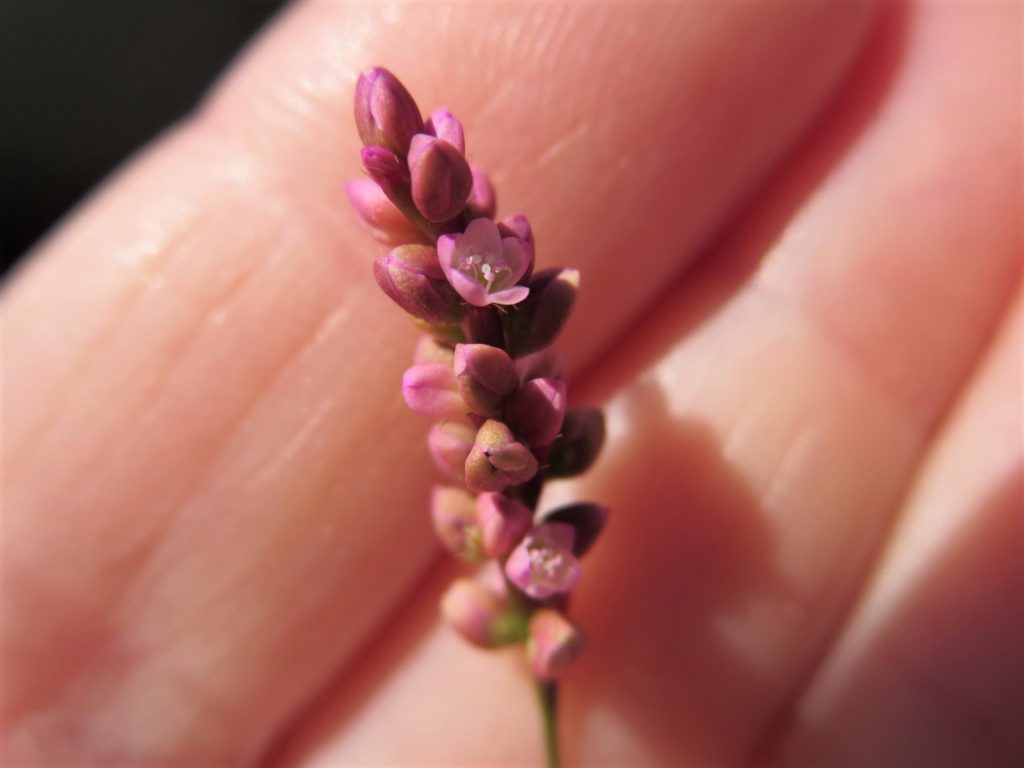
According to the Connecticut Botanical Society, what I probably have here is long-bristled smartweed (a.k.a. Oriental lady’s thumb), which they say can be identified by the “papery sheaths around the leaf joints with long, fine bristles at the top.” So, thanks to the alternative name, I can still call it “lady’s thumb.” Convenient!
But just in case you were wondering what the mark looks like, here you go.
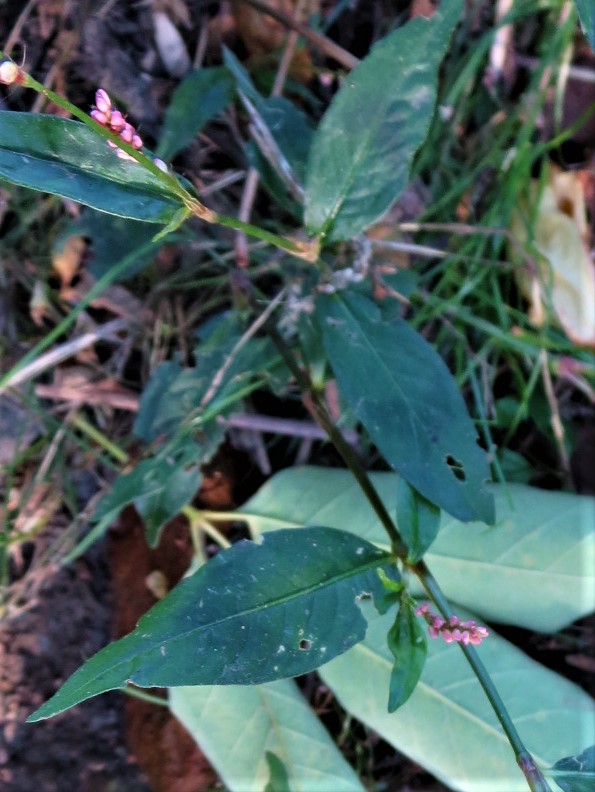
Now, remember when I said that dwelling on previously covered flowers was going to keep me from cataloguing other wildflowers? How wrong I was! Because I’ve got two more to squeeze into this post, thanks again to the Connecticut Botanical Society (to which I am sending tons and tons of psychic gratitude).
While on the webpage for long-bristled smartweed, I clicked on the link to the next flower from the same (buckwheat) family, thinking it might take me to another smartweed that I could use as a comparison. Instead, the link took me to this white flower, arrow tearthumb. Doesn’t it look a lot like this mystery flower I photographed earlier this month?

And I kept clicking on that link until I got to another plant I’d seen before, Japanese knotweed. I have noticed this stuff growing all over the place lately. I even took a picture of it today, thinking I should finally figure out what it was.
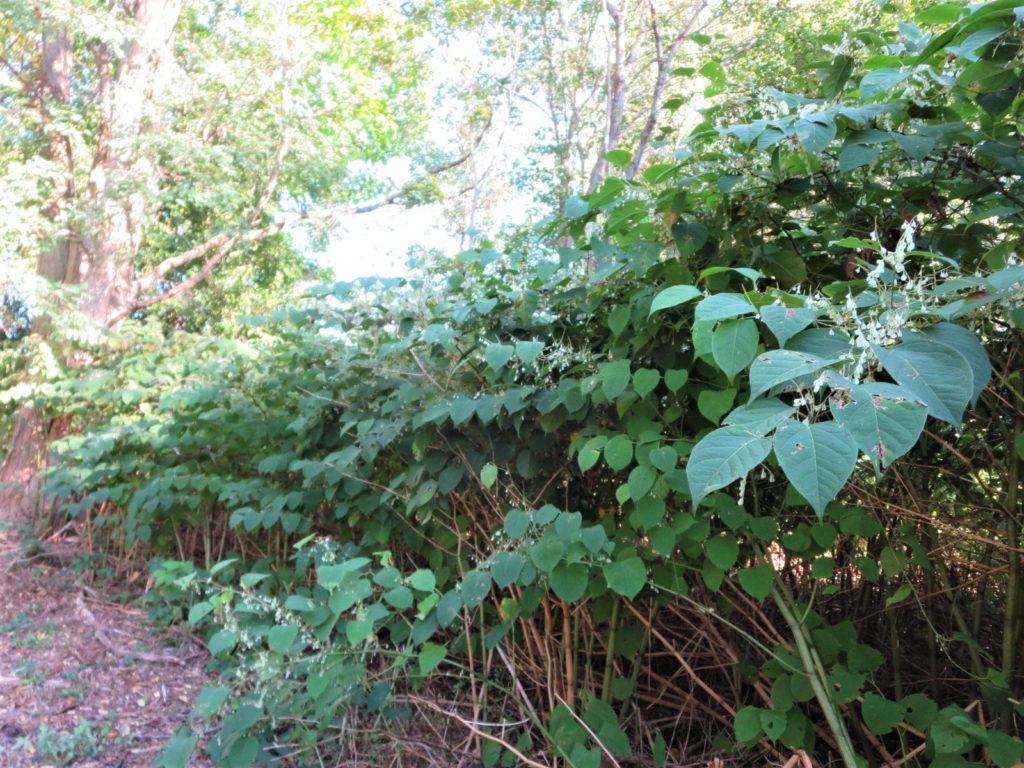
Japanese knotweed is apparently quite the invasive plant. That’s unfortunate, but at least I know what to call it now. It also has pretty flowers, and I especially love the seeds. I took a close-up picture of the seeds today, but it didn’t come out very well. I will try again on another day, and if the pictures come out nice, chances are you’ll see them!

Pingback: Flower Catalog | Blue-Footed Musings
Pingback: Not Knotweed! | Blue-Footed Musings